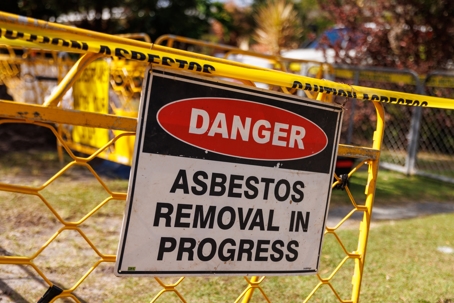
Understanding Asbestos Removal Quotes: Decoding the Jargon and Protecting Your Investment
Asbestos, once hailed as a miracle material for its fire-resistant and insulating properties, now casts a long shadow. Its legacy is one of significant health risks, necessitating careful and often costly removal. If you’re facing the prospect of asbestos removal, you’ll inevitably encounter a flurry of quotes, each promising a solution. But navigating this landscape can feel like deciphering a foreign language. This article serves as your guide, helping you understand the jargon, break down the costs, and ultimately, make informed decisions to protect your health and your investment. We’ll delve into the specifics of asbestos removal quotes, ensuring you’re well-equipped to choose the right contractor and safeguard your property.
The Importance of Professional Asbestos Removal
Before we delve into the specifics of asbestos removal quotes, it’s crucial to understand why professional removal is non-negotiable. Asbestos fibers, when disturbed, become airborne and pose a significant health hazard. Inhaling these microscopic fibers can lead to serious illnesses, including asbestosis, mesothelioma, and lung cancer. DIY attempts at asbestos removal are not only dangerous but also often illegal, as they can inadvertently spread asbestos fibers, contaminating your home and endangering yourself and others. Professional contractors are trained and equipped to handle asbestos safely, using specialized equipment and following strict regulations. They understand the intricacies of containment, removal, and disposal, ensuring the health and safety of everyone involved.
Breaking Down an Asbestos Removal Quote: Key Components
A comprehensive asbestos removal quote should be transparent and detailed, outlining every aspect of the project. Here’s a breakdown of the key components you should expect to see:
- Inspection and Assessment: This includes a thorough inspection of the property to identify the presence and extent of asbestos-containing materials (ACMs). The assessment should also include a risk assessment, evaluating the potential for fiber release.
- Containment: This crucial step involves setting up containment areas to prevent the spread of asbestos fibers. This includes sealing off the work area, using negative air pressure machines, and employing specialized equipment like HEPA filters.
- Removal of ACMs: This details the specific ACMs to be removed, such as asbestos insulation, floor tiles, or siding. The quote should specify the methods to be used, adhering to all relevant regulations.
- Waste Disposal: Asbestos waste must be disposed of at a licensed facility. The quote should include the cost of transportation, disposal fees, and all associated paperwork.
- Air Monitoring: Throughout the removal process, air monitoring is conducted to ensure that asbestos fiber levels remain within acceptable limits. The quote should include the cost of air sampling and analysis.
- Clearance Testing: Once the removal is complete, clearance testing is performed to confirm that the area is safe for reoccupation. This typically involves air sampling and analysis by a certified professional.
- Labor and Materials: A detailed breakdown of labor costs (including the number of workers and hours) and the cost of all materials, such as personal protective equipment (PPE), containment materials, and specialized tools.
- Permits and Regulations: The quote should include the cost of any necessary permits and compliance with all applicable regulations.
- Insurance: Ensure the contractor carries adequate insurance, including liability and workers’ compensation, to protect you from potential risks.
Decoding the Jargon: Common Terms in Asbestos Removal Quotes
The world of asbestos removal is filled with specialized terminology. Here’s a glossary of common terms you’ll encounter:
- ACM (Asbestos-Containing Material): Any material containing more than 1% asbestos.
- Friable vs. Non-Friable: Friable materials can be easily crumbled or reduced to powder by hand, posing a higher risk of fiber release. Non-friable materials are more stable.
- HEPA Filter (High-Efficiency Particulate Air Filter): A filter that removes 99.97% of airborne particles 0.3 micrometers in diameter. Essential for containing asbestos fibers.
- Negative Pressure: Creating a lower air pressure within the containment area to prevent asbestos fibers from escaping.
- Encapsulation: Sealing asbestos-containing materials to prevent fiber release. This is sometimes an alternative to removal, depending on the situation.
- Enclosure: Creating a barrier around asbestos-containing materials to prevent access and fiber release.
- PPE (Personal Protective Equipment): Protective gear worn by workers, including respirators, coveralls, gloves, and eye protection.
- Clearance Certificate: A document issued by a certified professional confirming that the area is safe for reoccupation after asbestos removal.
Evaluating Asbestos Removal Quotes: What to Look For
Receiving multiple asbestos removal quotes is a good practice, but comparing them effectively requires careful evaluation. Here’s what to look for:
- Detailed Scope of Work: Ensure each quote clearly outlines the scope of work, including the specific ACMs to be removed, the methods to be used, and the areas to be addressed.
- Compliance with Regulations: Verify that the contractor is licensed and insured and that the quote explicitly states compliance with all relevant local, state, and federal regulations.
- Experience and Credentials: Check the contractor’s experience, certifications, and references. Look for contractors with a proven track record and positive reviews.
- Pricing Transparency: The quote should clearly break down all costs, including labor, materials, disposal fees, and any other charges. Avoid quotes with vague or hidden fees.
- Warranty: Inquire about the warranty offered on the work. A reputable contractor will stand behind their work.
- Communication: Assess the contractor’s communication skills. Are they responsive, professional, and willing to answer your questions?
Common Mistakes to Avoid When Choosing an Asbestos Removal Contractor
Selecting the wrong contractor can lead to costly mistakes and potential health risks. Here are some common pitfalls to avoid when evaluating asbestos removal quotes:
- Choosing the Lowest Bid: While cost is a factor, it shouldn’t be the only one. The lowest bid may indicate a contractor cutting corners, using substandard materials, or lacking the necessary expertise.
- Failing to Verify Credentials: Always verify the contractor’s licenses, insurance, and certifications. Ask for proof of insurance and check references.
- Not Getting Multiple Quotes: Obtain quotes from at least three different contractors to compare pricing, services, and experience.
- Ignoring the Fine Print: Carefully review the entire quote, paying attention to the scope of work, payment terms, and any exclusions.
- Not Asking Questions: Don’t hesitate to ask the contractor any questions you have about the removal process, the materials used, or the disposal methods.
Protecting Your Investment and Your Health: The Bottom Line
Understanding asbestos removal quotes is crucial to protecting your health and your investment. By carefully evaluating the components of a quote, decoding the jargon, and avoiding common mistakes, you can make informed decisions and choose a qualified contractor who will safely and effectively remove asbestos from your property. Remember to prioritize safety, compliance, and transparency throughout the process. The peace of mind that comes from knowing your home is free from asbestos and the potential health risks it poses is invaluable. Choosing the right contractor for your asbestos removal project is a crucial step in ensuring a safe and healthy environment for you and your family. Careful consideration of the details within the asbestos removal quotes is paramount.
The Future of Asbestos and Removal Practices
The fight against asbestos continues, with ongoing research and advancements in removal techniques. Asbestos awareness is growing, and regulations are constantly evolving. Stay informed about the latest developments and ensure any contractor you choose is up-to-date on the best practices and regulatory requirements. The future of asbestos removal will likely see increased emphasis on safer, more efficient methods and a greater focus on preventative measures. The evolution of asbestos removal techniques continues to prioritize both safety and environmental responsibility. Understanding these advancements will further empower you to make informed decisions when evaluating asbestos removal quotes in the future.
[See also: Related Article Titles]

